A movie that infiltrated a factory that manufactures `` Impossible Burger '' that does not use beef despite the taste and fragrance of the meat itself

Artificial meat '
How Impossible Foods Created the Perfect Meatless Burger— Cult Following-YouTube
Impossible Foods is based in Redwood City, California, USA. That's why Eater's Daniel Green came to the Impossible Foods headquarters in Redwood City.
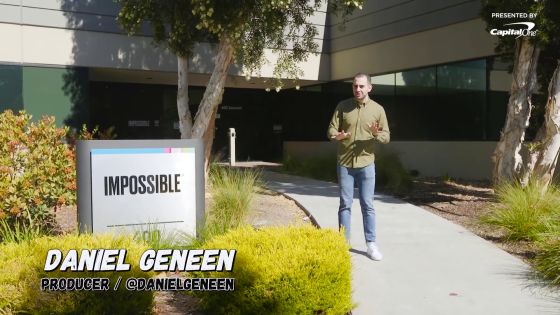
Enter the building ...

Continue to go through the corridor.

You can see the factory that makes Impossible Foods.
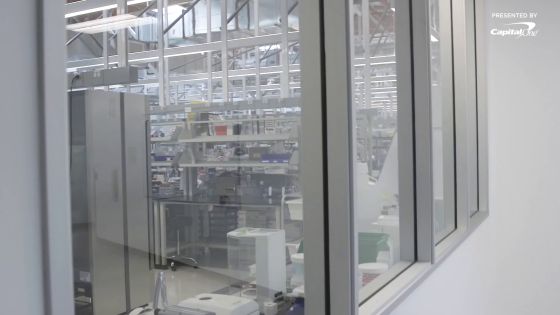
Wear a white coat and try to get inside.
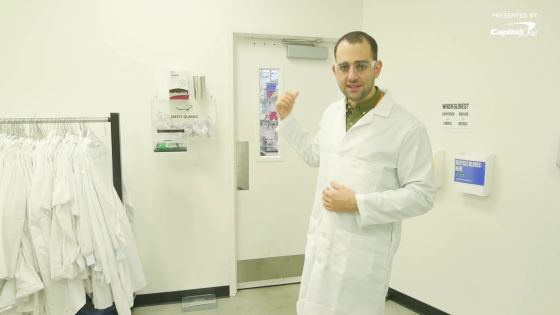
Inside is like this. Although it is a cooking place, it seems to be an experimental place where Macs are lined up.
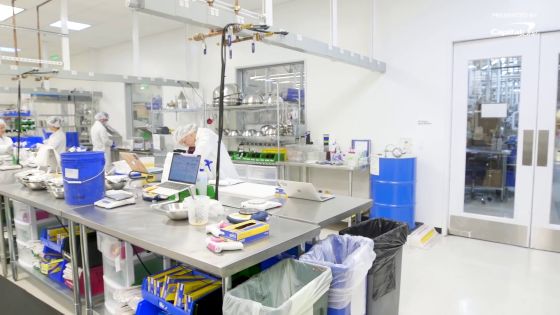
Here you will see the ingredients in Impossible Foods. These are all plant-based ingredients.
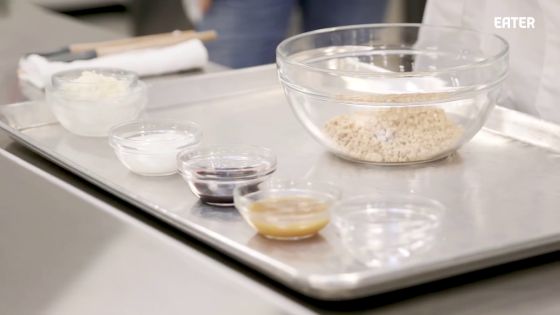
The main ingredient is soybeans with a “meat texture”.

Here with water ...
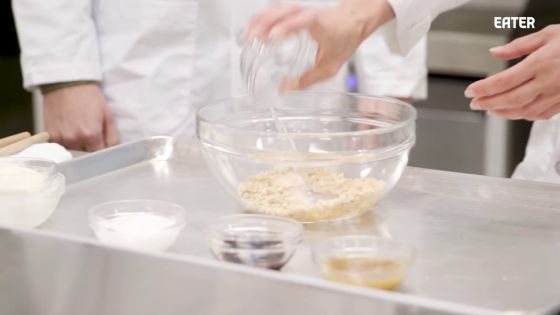
Add potato protein plus nutrients and flavors. This flavor changes in response to heating.
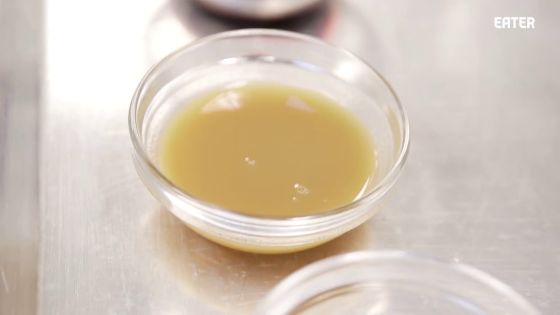
Green, who tasted potato protein, commented, “It looks like a
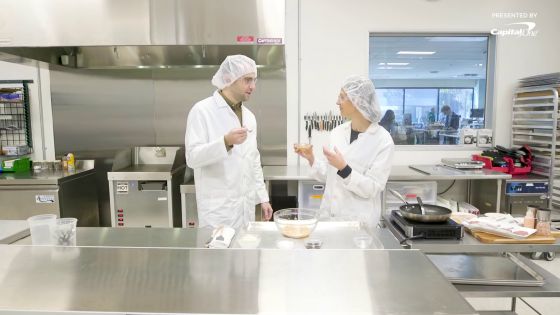
It seems that when potato protein is added, the ingredients are better organized. In addition, when heated, it will stick to moisture and produce gravy.
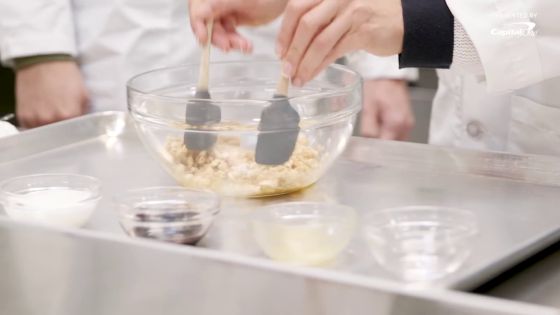
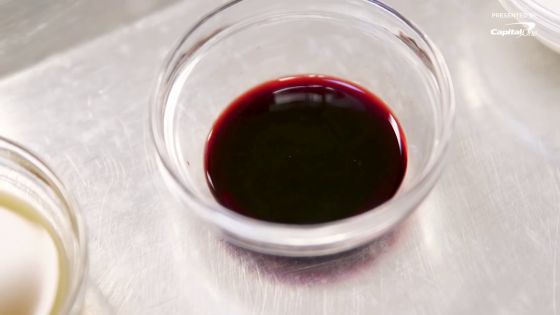
Plants also have hemoglobin that tastes like iron in the raw state, and when this is heated, it reacts with ingredients contained in Impossible Foods, creating a “meat-like taste”. Because it contains iron, it tastes like salty blood when licked as it is.
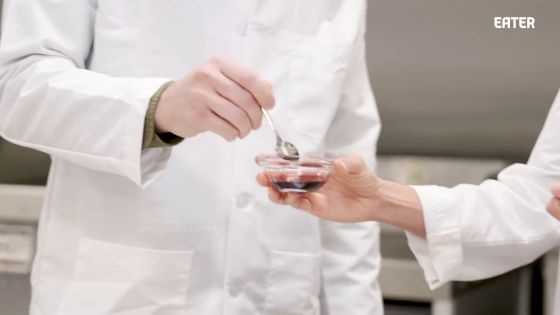
Soy hemoglobin suddenly started to look like mince when mixed with hemoglobin.
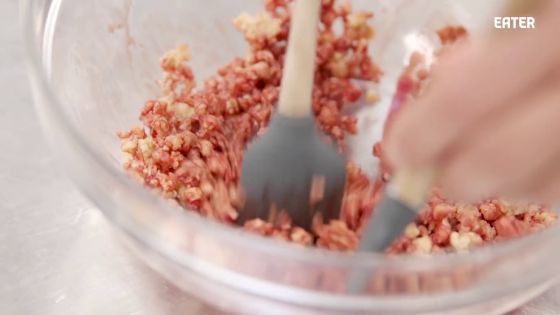
Sunflower oil contains

In addition,
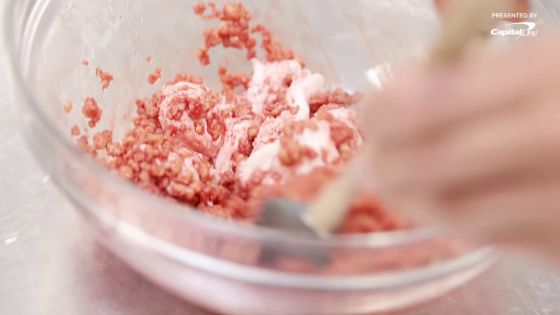
Coconut oil, which solidifies at room temperature and melts when heated, plays an important role in the element of “meat overflows when baked”.
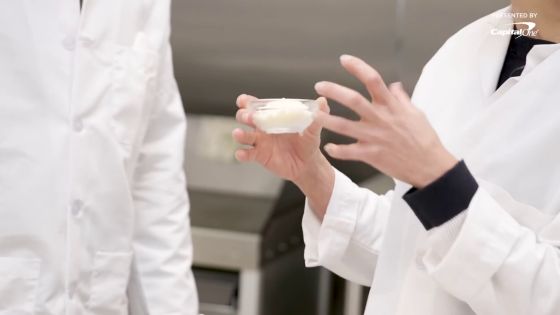
If these are scaled and reproduced in a huge machine, Impossible Foods sold at the store will be completed.
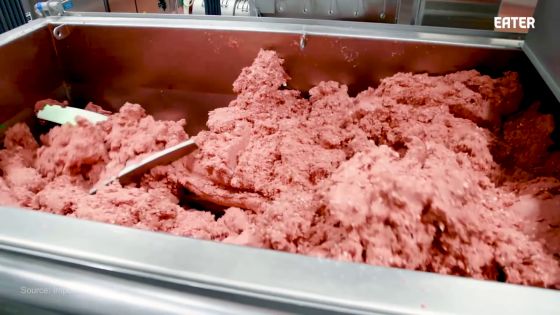
The factory looks like this. The bag in the foreground is packed with a large amount of soy protein.

Carry this ...
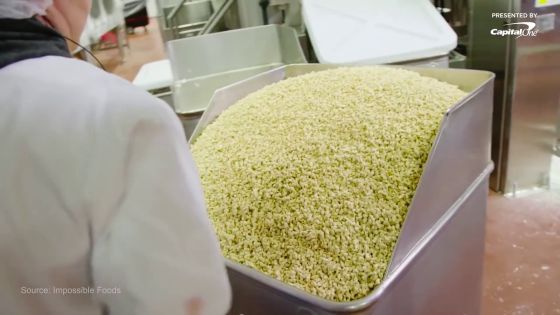
Loaded into the machine.
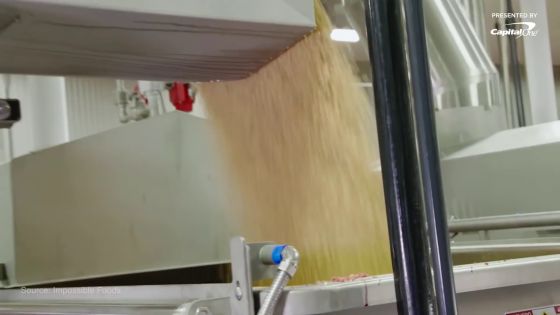
Add potato protein as well.
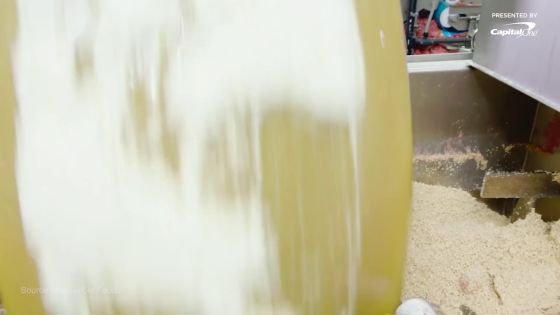
Add more hemoglobin ...
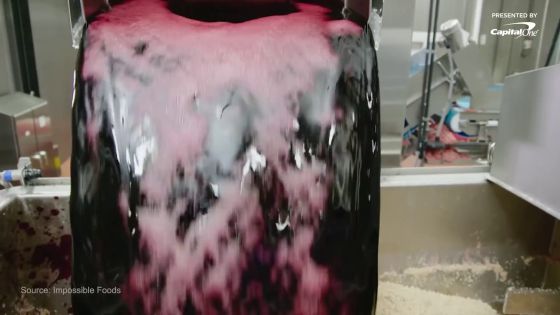
When you mix well, you can see that the white soy protein gradually turns pink.
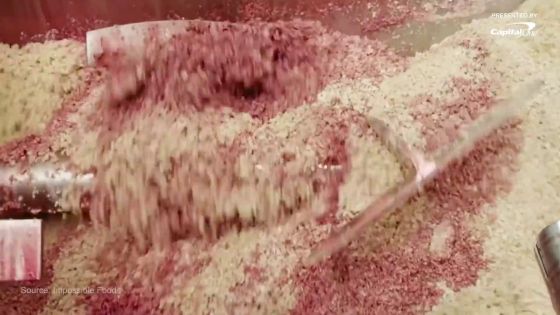
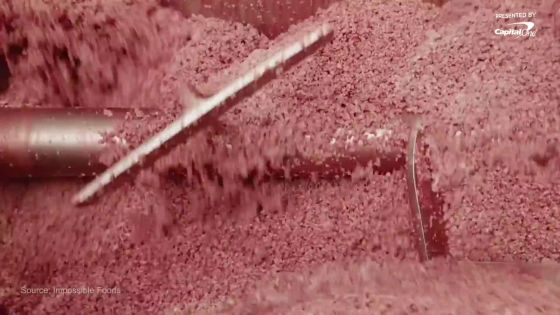
I will carry this on the line.
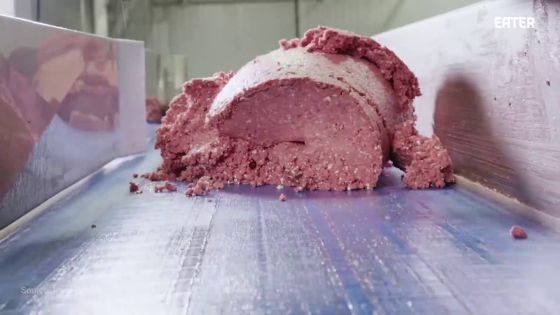
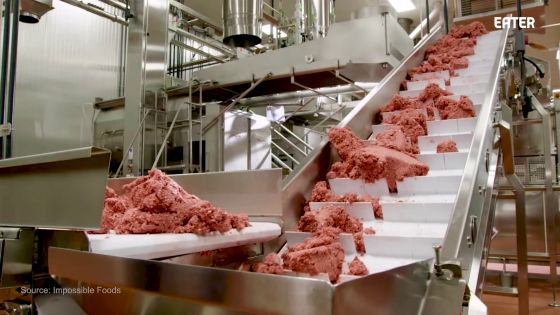
Molding work.
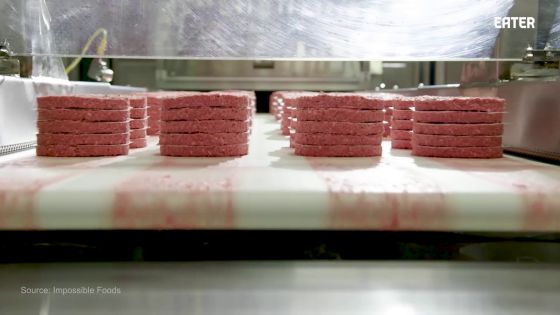
This is a different shape. It is frozen.
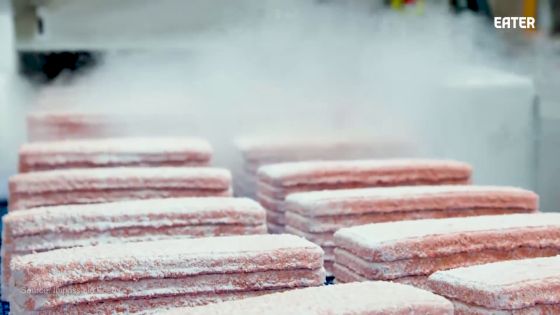
From here, it looks like a typical hamburg factory site.
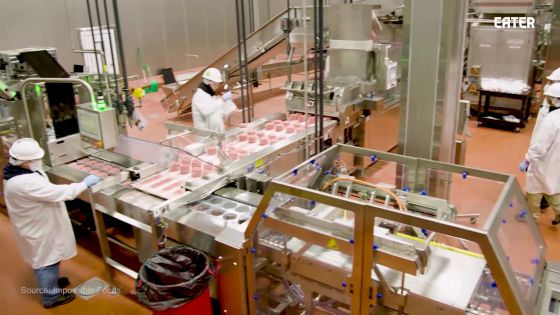
Packed in a package ...
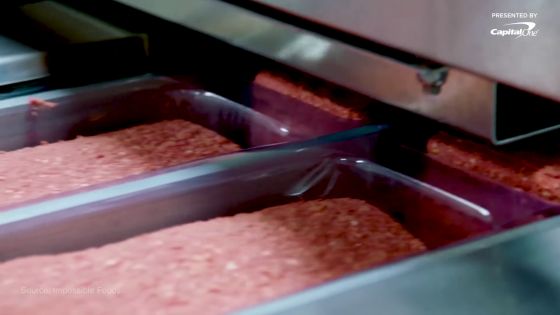
sealing.
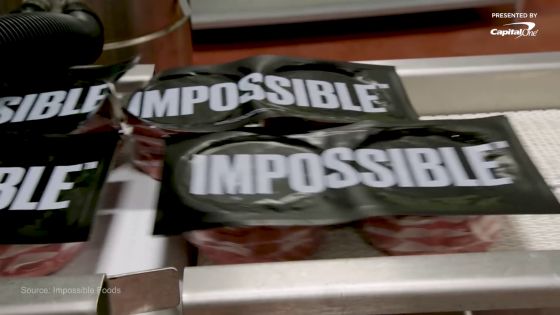
It will be packed and shipped.
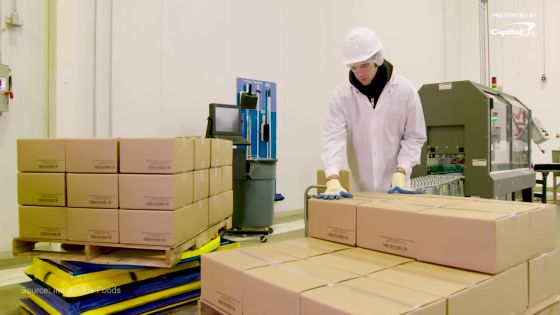
Hemoglobin plays an important role in turning plant protein into meat. According to Chief Scientific Officer David Lippman, the hemoglobin of Impossible Foods is made using “fermentation”.
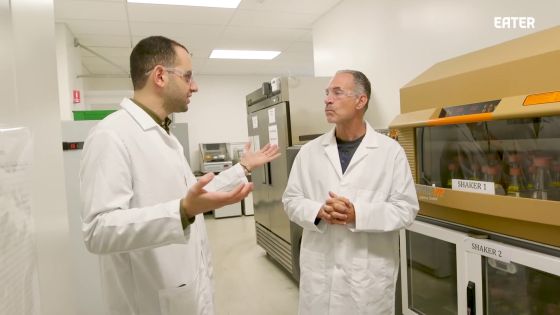
“Whether cheese or wine, the process of fermentation has valued something relatively cheap over the past hundred years,” says Lippman.

In the machine labeled “SHAKER 1,” the flask is shaken. By adding yeast fermentation, more red hemoglobin will be produced.

Lippman said he is growing several strains and investigating which one is most effective.
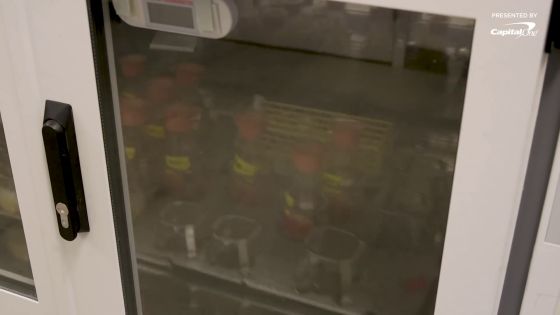
As a result of the experiment, effective strains will be taken out and further detailed experiments will be conducted.
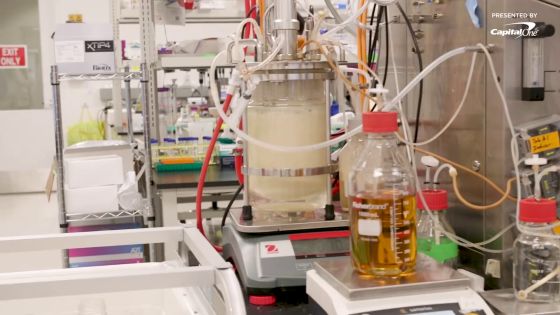
The hazy red liquid in the flask is hemoglobin. In this lab, we continue to experiment on how to create hemoglobin more efficiently as described above.
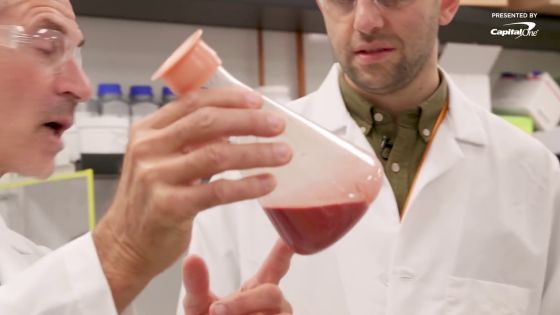
“Is Impossible Foods healthier than beef burgers?” Said Lippman, “Founder

Therefore, it seems that the priority of Impossible Foods is not “health” but “taste”.
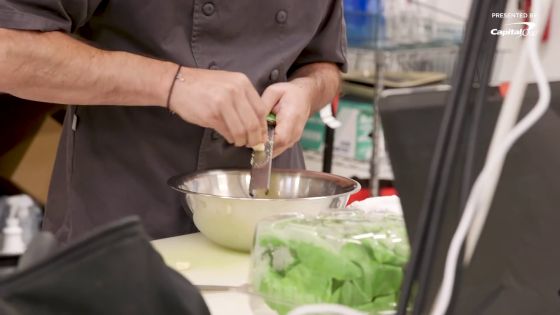
Patrick Brown, founder of Impossible Foods, appears. Brown is an emeritus professor at Stanford University and a researcher at Howard Hughes Medical Institute.
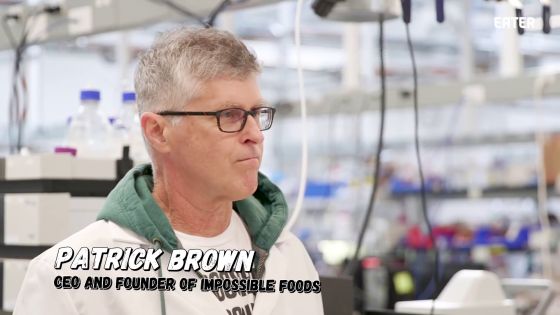
Brown explained why he launched Impossible Foods, 'To confront the environmental threats that humanity faces.' In order to meet human demand for meat, it is necessary to keep a large number of cattle, and its breeding is said to have a global impact on various aspects such as climate change, water resources, and land use.

People who like meat like the deliciousness of protein and iron, ease of use, and reasonable price, not “I like animal corpses”. Therefore, it seems that an attempt to reproduce 'meat' itself with plant materials has begun.
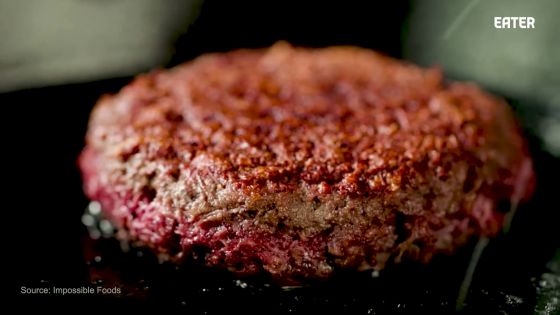
“I like cattle, but I don't want to flood the whole world with billions of cattle.” “If you can eliminate the devastating effects of keeping cattle, this is great. I think, 'Brown said.
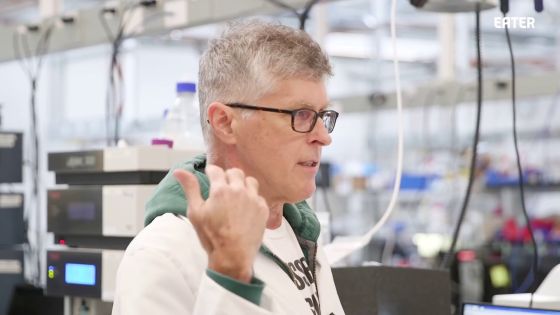
There is a scientist's opinion that growing soybeans instead of cattle does not have a positive impact on the earth, but considering the state of the meat industry as of 2019, it can be a `` better '' option Green concluded.
You can read how much real meat Impossible Burger reproduces from the following article.
Artificial meat `` Beyond Burger '' and `` Impossible Burger '' that reproduced the flavor, taste, and texture of meat at the molecular level were amazing if you actually baked and eat it-GIGAZINE

Related Posts:







